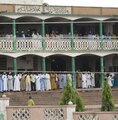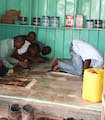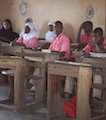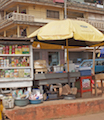Public Face of Islam in Kumasi
By Gracia Clark
The cosmopolitan, bustling city of Kumasi, the second largest city in Ghana, is home to a diverse population drawn to its commercial opportunities from many countries, whether in West Africa or many other parts of the world. Its Muslim community represents a conspicuous and significant aspect of that diversity, both culturally and economically. Although Kumasi proudly proclaims itself the historic capital of the Asante Confederacy, with its pre-colonial empire, it has another prominent legacy as the gateway city to the northern half of Ghana. Asante and members of other Akan and Ewe ethnic groups from the more prosperous southern half of Ghana make up the majority of Kumasi residents, but its substantial minority of Muslims and other Northerners completes its distinctive character.

An introduction to the membership and history of Kumasi's Islamic community and its importance to the city.

The 2011 city-wide parade on Eid-al-Fitr, the holiday celebrating the completion on the annual Ramadan fast.

Family and neighborhood celebrations of life stage transitions and other daily and seasonal religious occasions.






